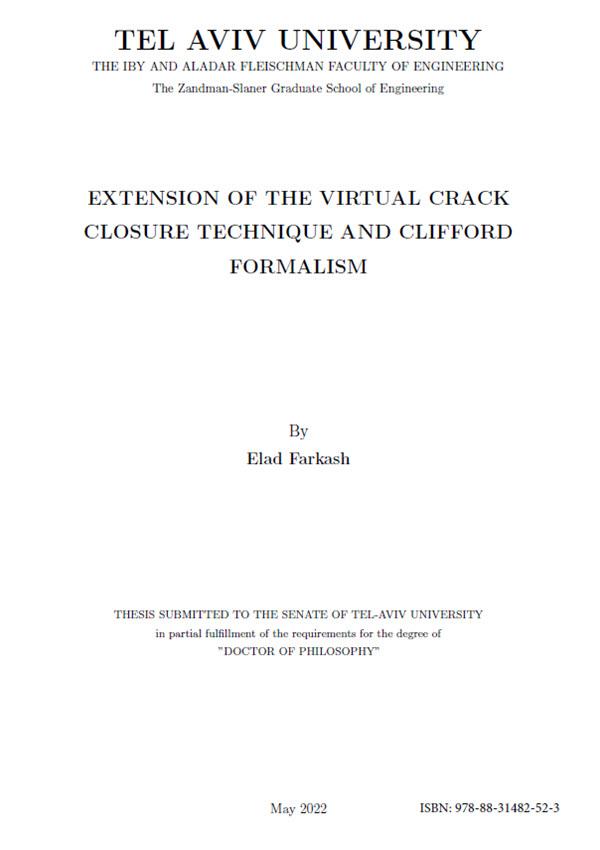Extension of the virtual crack closure technique and Clifford formalism
Keywords:
FractureSynopsis
The Virtual Crack Closure Technique (VCCT) was first presented in 1977 for calculating stress intensity factors of cracks in linear elastic, homogenous and isotropic material. It makes use oof the Irwin crack closure integral to obtain values of the modes I, II and III energy release rates from finite data. Using the energy release rate, the stress intensity factors may be obtained. In the literature, failure criteria make use of the stress intensity factors. Thus, accurate values for the stress intensity factors are valuable. It was seen in the literature that i was difficult to obtain accurate results for interface cracks with VCCT. In Banks-Sills and Farkash (2016), a criterion was proposed to overcome this difficulty for this method allowing accurate calculation of stress intensity factors for two-dimensional problems of an interface crack between two dissimilar linea elastic, homogenous and isotropic materials with fine meshes. For this criterion, new energy release rates were presented, namely, the dual energy release rates. The virtual crack extension (VCE) consists of a number of elements rather than one element as was used in previous studies. The new criterion indicates the optimal number of elements to be used as the VCE.





